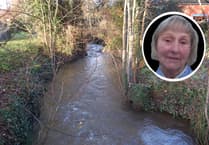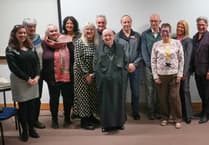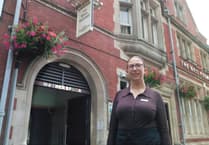The latest in of an ad hoc series on historic buildings in Ross that existed at the time of William Gilpin’s Wye Tour of 1770, we focus on Brook House as featured in documentation compiled by members of the Ross-on-Wye and District Civic Society.
BROOK House is a handsome building standing on the corner of Brampton Street and Greytree Street. It had an interesting interior as described by the Royal Commissioners who made a detailed survey in 1929.
The stone-built house has been divided into two. The interior features a staircase with heavy turned balusters and a newel at the bottom with a ball-terminal. The rectangular wing at the back has been added at a later date.
It was the Merrick family of Quakers and tanners who developed this end of Brookend Street during the late seventeenth century.
James Merrick built Brook House as his home for his wife and family and, in his will, bequeathed the property to William Hill. The rear wing had been added by 1703 to provide a malthouse.
Another resident of Brook House was Henry Edwards He was an English stage actor, writer and entomologist who also gained fame in Australia, San Francisco and New York City for his theatrical work.
Henry was born to Hannah and Thomas Edwards at Brook House on August 27, 1827, and as a child Henry collected butterflies as a hobby and later studied them under the tutelage of Edward Doubleday, a Quaker.
Henry’s solicitor father intended that he should have a career in law but after a brief period of unsuccessful study, Henry took a position at a counting house in London and began acting in amateur theatre productions in the city.
He then journeyed to join his brother William who had settled in Australia allowing Henry to continue his interest in collecting and cataloguing insects that he found on his brother's land, and further afield.
Within two years, he had gathered 1,676 species of insects, shot and mounted 200 birds, and pressed some 200 botanical specimens. This collection later formed the genesis of the National Museum of Victoria’s collection.
A move to America followed and after writing a series of influential studies on Pacific Coast butterflies and moths he was elected life member of the California Academy of Sciences.
Henry’s large collection of insect specimens served as the foundation of the American Museum of Natural History’s butterfly and moth studies following his death in New York City on June 9, 1891.





Comments
This article has no comments yet. Be the first to leave a comment.